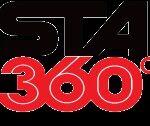Swapping engines in Honda vehicles can sometimes lead to challenges with emission systems, particularly when transitioning from an older OBD1 engine to a newer OBD2 chassis. One common question arises: how to manage emissions testing when using an OBD1 engine in a vehicle designed for OBD2?
A frequently discussed workaround involves a clever trick to pass emissions. This method suggests utilizing a Y7 or Y8 ECU, along with performing a crank sensor fix. This might entail employing a Y7/8 oil pan and oil pump to accommodate the crank sensor, effectively mimicking an OBD2 setup for the emissions test. Afterward, one could revert back to an OBD1 ECU for regular driving.
This approach stems from the understanding that emissions regulations often stipulate that the replacement engine should be the same year or newer than the vehicle chassis. While federal guidelines exist, enforcement can vary significantly at the state level. For instance, practices in states with stringent emissions standards like California may differ drastically from those in states with more lenient enforcement, such as Delaware, where individuals might find it easier to pass inspections with modifications as long as the check engine light (CEL) is off and the OBD2 port is functional for scanning.
It’s crucial to recognize the legal implications and ethical considerations surrounding such modifications. While these “tricks” might enable passing an emissions test, they may not fully comply with all regulations, and the long-term impact on emissions control is a factor to consider. Always research local and federal regulations thoroughly before undertaking engine swaps and modifications.
